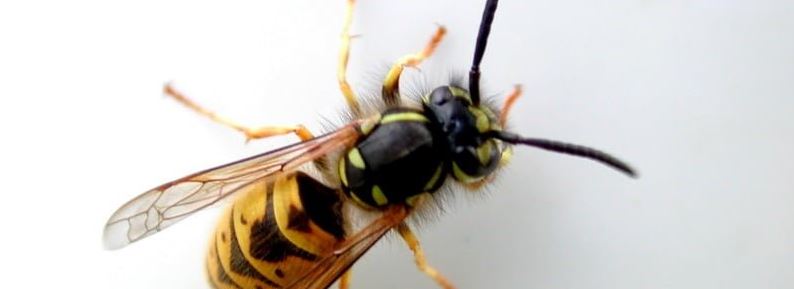Eden Wild Goose Nature
Nature notes from the Focus Magazine Oct 2021

Wasps eat 14 million kg of insects each year
A sure sign of the turning season is the increase in the wasp population that won’t give us a moment’s peace as we eke out the summer days with a little alfresco dining. There you are soaking up the last rays of warm sun when a squadron appears, buzzing and dive bombing you from every direction. It’s annoying but it can be fun to watch our different responses, some remaining cool and calm as if not bothered, others flapping away with everything they’ve got, and the rest abandoning their food and running full tilt up the garden, red faced and flustered.
Sometimes I ponder the reason for these aggressive nuisances*. It turns out that they are very useful to us for their vital role as insect and garden/crop pest destroyers. It is estimated that in the UK, the common wasp species capture 14 million kg of pests and caterpillars every year, which they subdue and then take home for wasp grubs and larvae to feed on. I can’t imagine what 14 million kg of insects might look like but it’s an impressive amount and we should be grateful really. Along the way, and incidentally, they are also useful as pollinators.
This year we have noticed a lot of wasp nests locally and consequently there have been a lot of wasps. In fact, many times I have sat in our shed cum summer house and heard a strange rasping sound- on investigation I discovered it was a wasp munching away on the wooden structure, which she would then mix with her saliva making a kind of papier mache, before taking it back to the nest to build it bigger and maybe, who knows, better. A wasp’s nest is an extraordinary structure and can reach the size of a football, housing between 5 and 10, 000 wasps each. Luckily for us, I suppose, the vast majority of these will die once the colder weather arrives. But before the end a few queens will have mated with the drones- who will die soon after- and the queens will look for a place to hibernate till Spring. Of these, around 98% will also die, and then one day, maybe in January or February you will be surprised to find a large wasp drowsily buzzing around. It will probably be a queen who survived the winter, looking for a place to start the process all over by beginning to build a new nest for her eggs.
And the reason they go for our picnics? That’s the time when there are lots of wasps, but fewer wasp babies to feed and fewer insects around. The wasp babies reward their feeders with a little drop of sweet liquid but fewer babies mean less reward… therefore the workers take a fancy to our sandwiches and glasses of squash or wine as they are hungry and fancy the carbs. It’s annoying but you can’t blame them.
One wasp expert explained that wasps are apex predators, and we need to think of them like the lions of our garden. They can be aggressive when they are hungry or threatened.
So, I’m trying to re-educate myself not to ‘hate’ them but to respect them- but no one wants to be ‘bitten’ by a lion of the garden if they can avoid it.
Philippa Skinner
*There are 1000 s of species of wasps in the UK and most of them don’t sting us, so we don’t need to worry about them at all. Most are solitary, while the remainder are termed social and these form colonies. The one we most commonly encounter is called -would you believe? – the common wasp or if you prefer, ‘Vespula Vulgaris’.